If you're wondering what to make with rosehips, a simple rosehip syrup recipe is a great way to preserve the fruity, tart goodness of the hips for winter. Some people use it for its "immune system/medicinal benefits" during cold and flu season. Some claim it's a good source of Vitamin C, but as it degrades through cooking, I just enjoy the flavor in drinks like tea and cocktails.
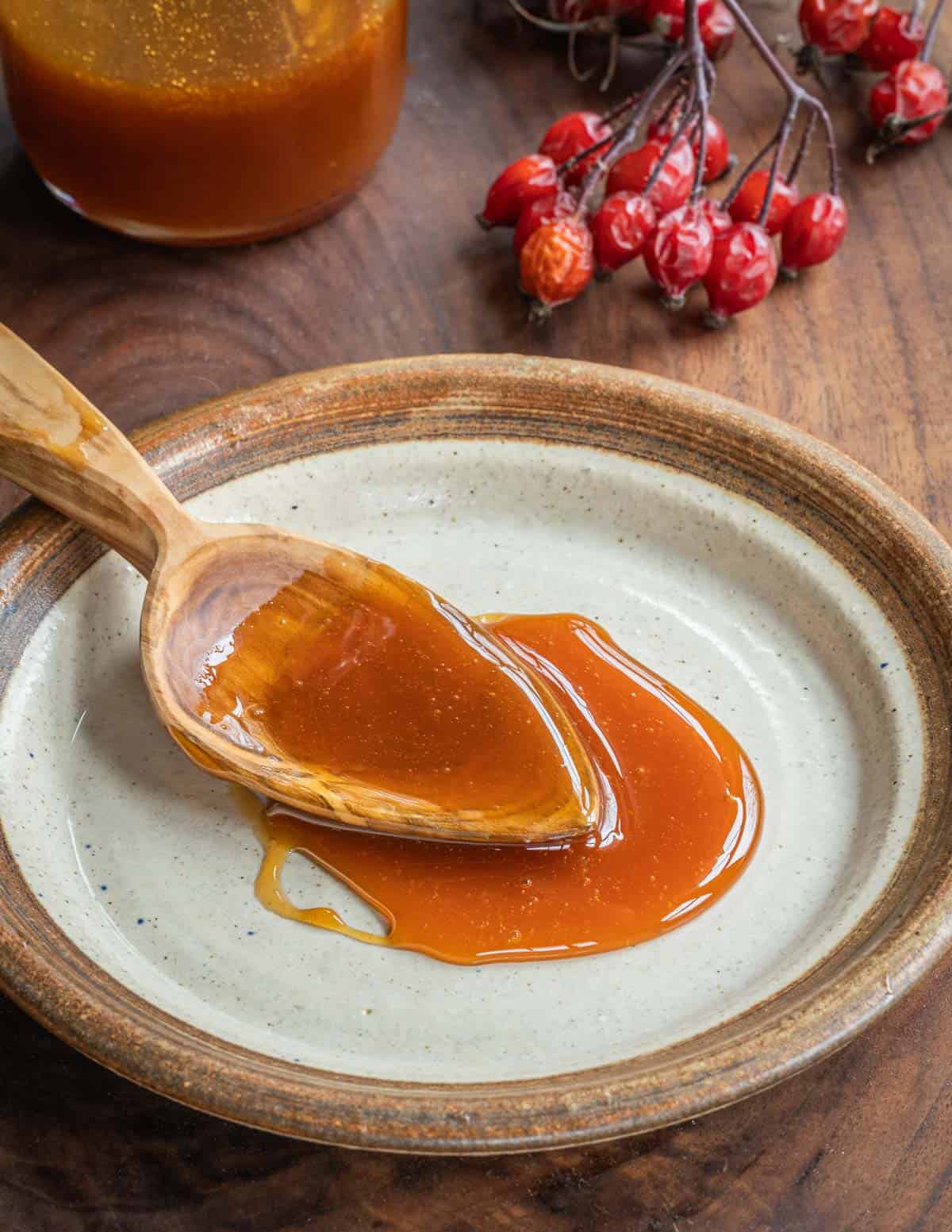
The Best Roses for Rosehips
All roses will make hips, but they vary drastically in how they can be used. Rosa rugosa hips are the largest and their flesh is so thick it can be cooked like a fruit. They're too precious for syrup.
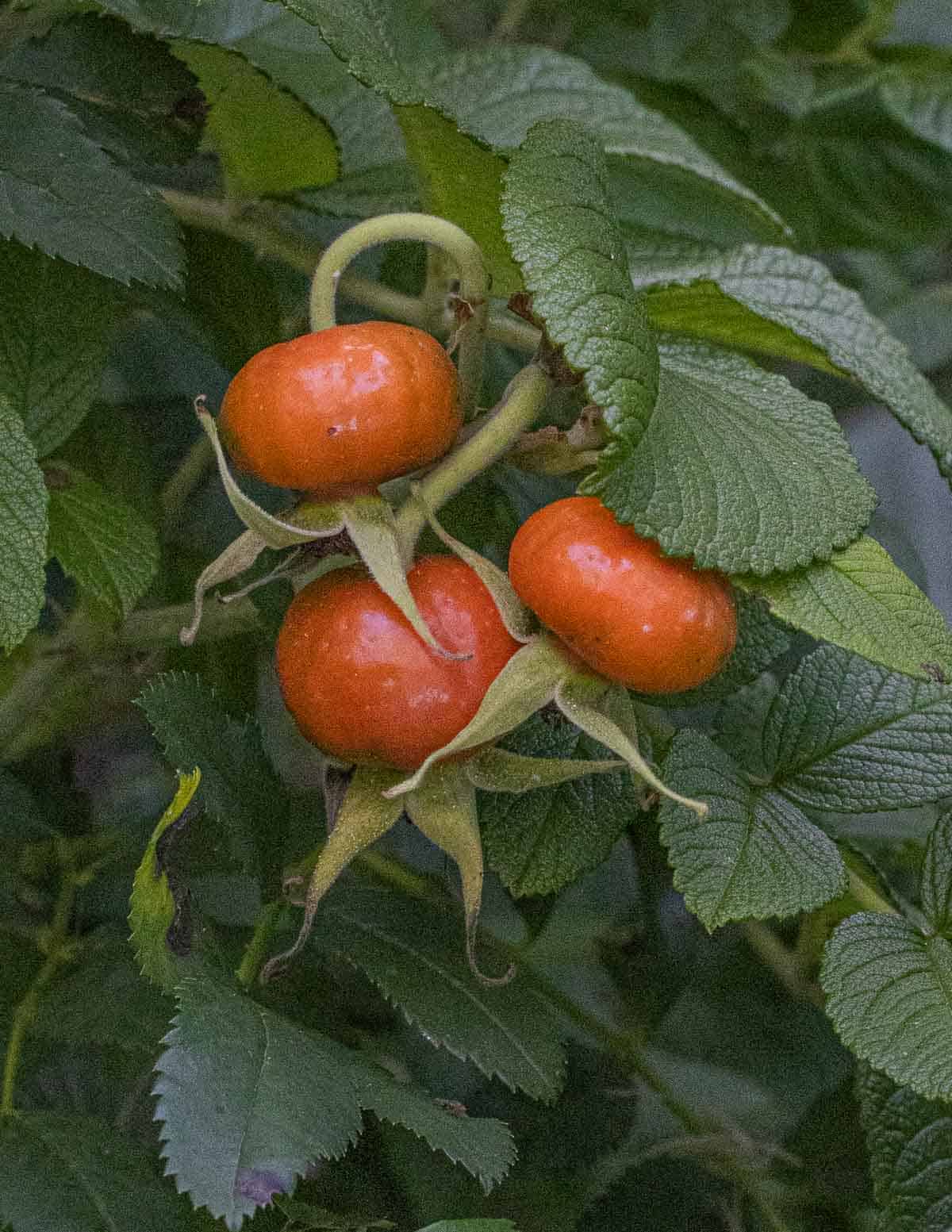
Wild rose hips are smaller, with a thin flesh and many seeds. They should be dried for tea, or infused into a concentrate like this honey.
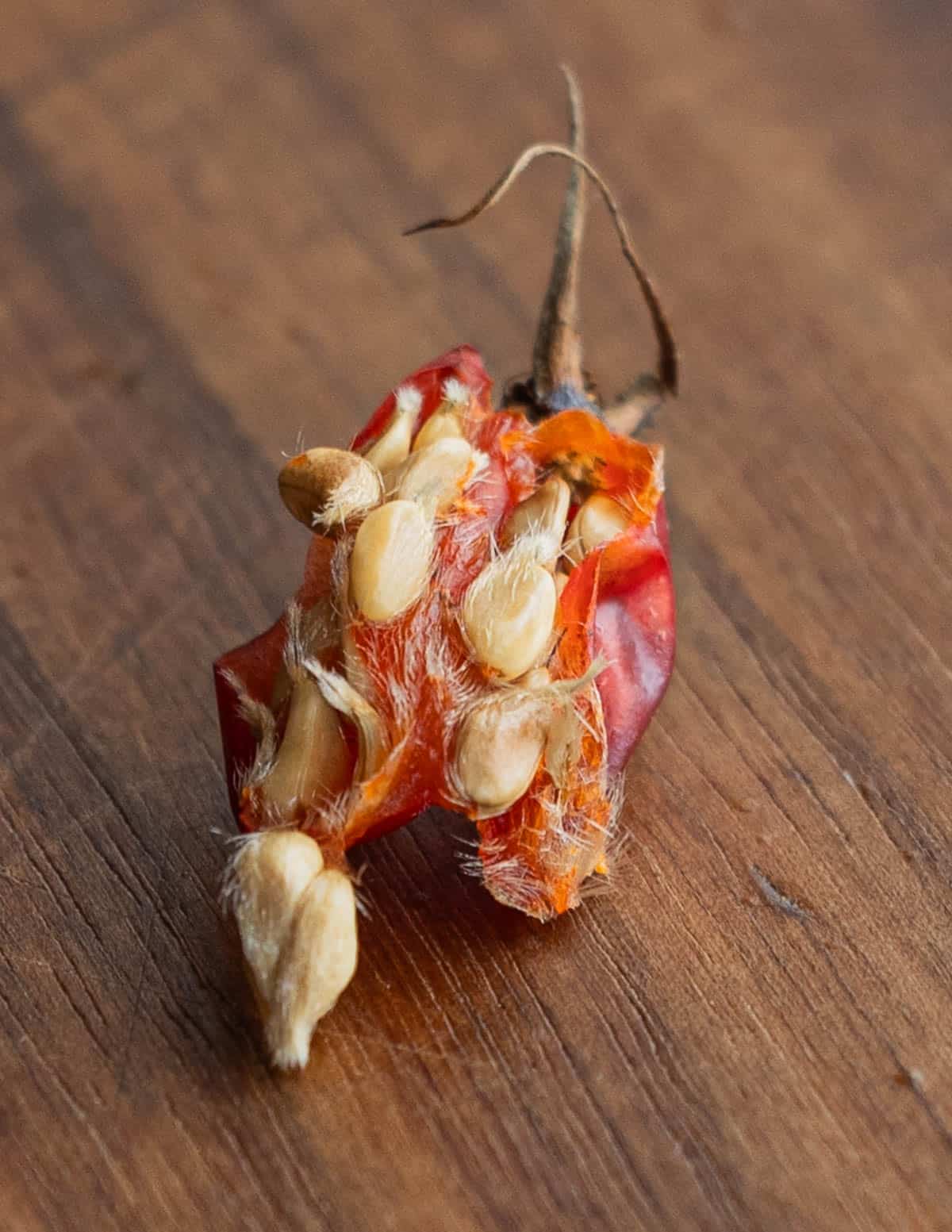
The hips are often available on the plants after the snow falls. I look for them along the north shore around the same time I forage highbush cranberries.
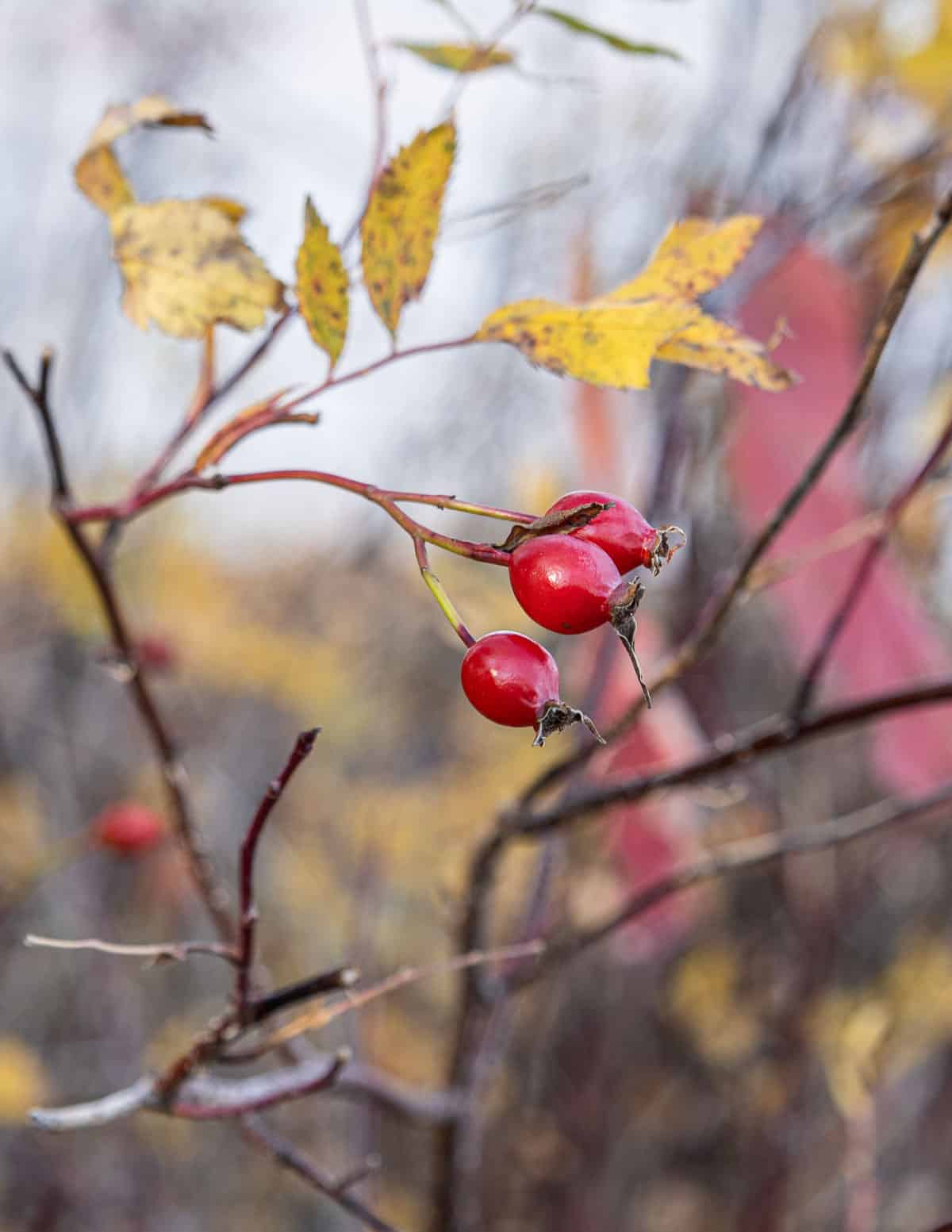
How to Make Rosehip Syrup
Harvest rosehips when they have a bright red color and are no longer green. Clean them, then blend in a food processor or using a handblender.
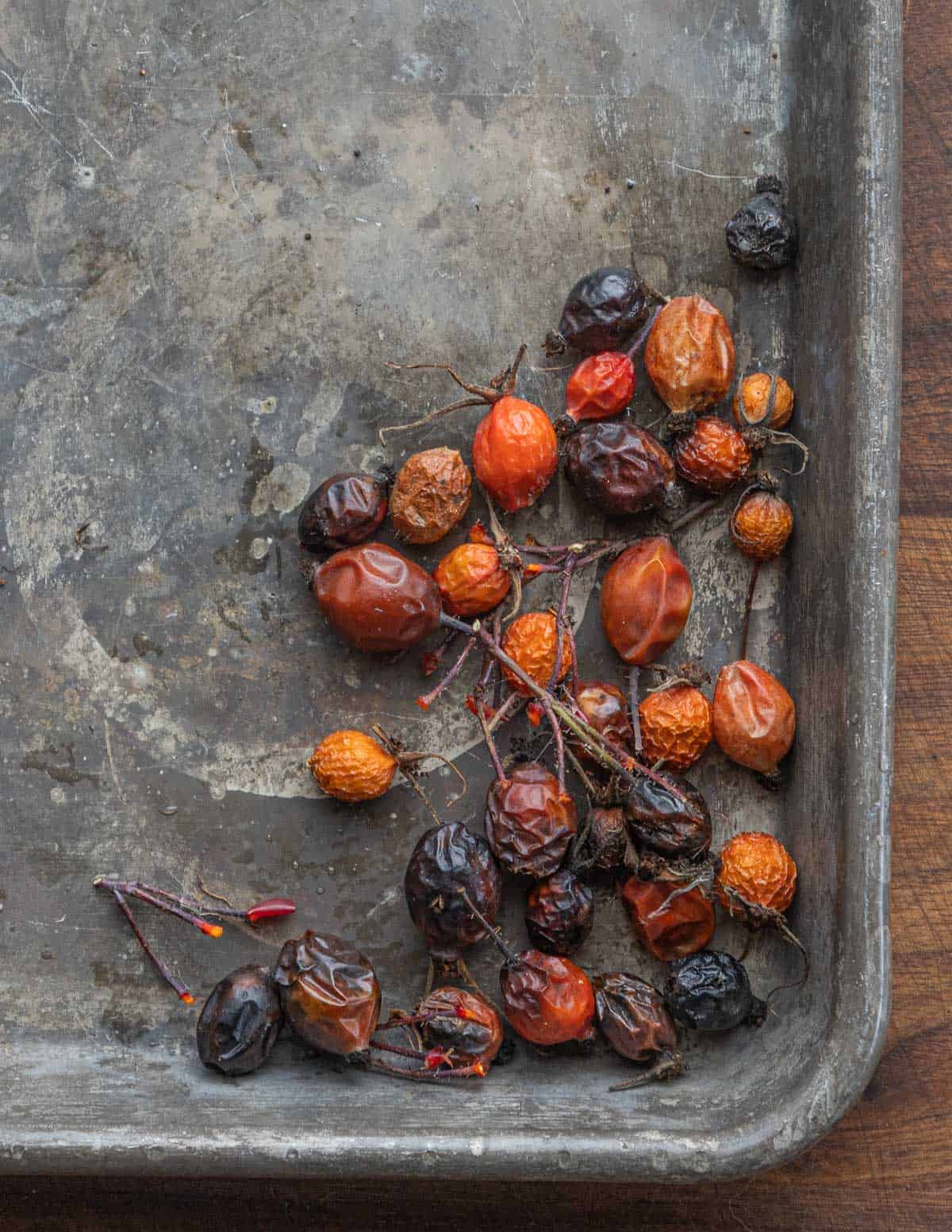
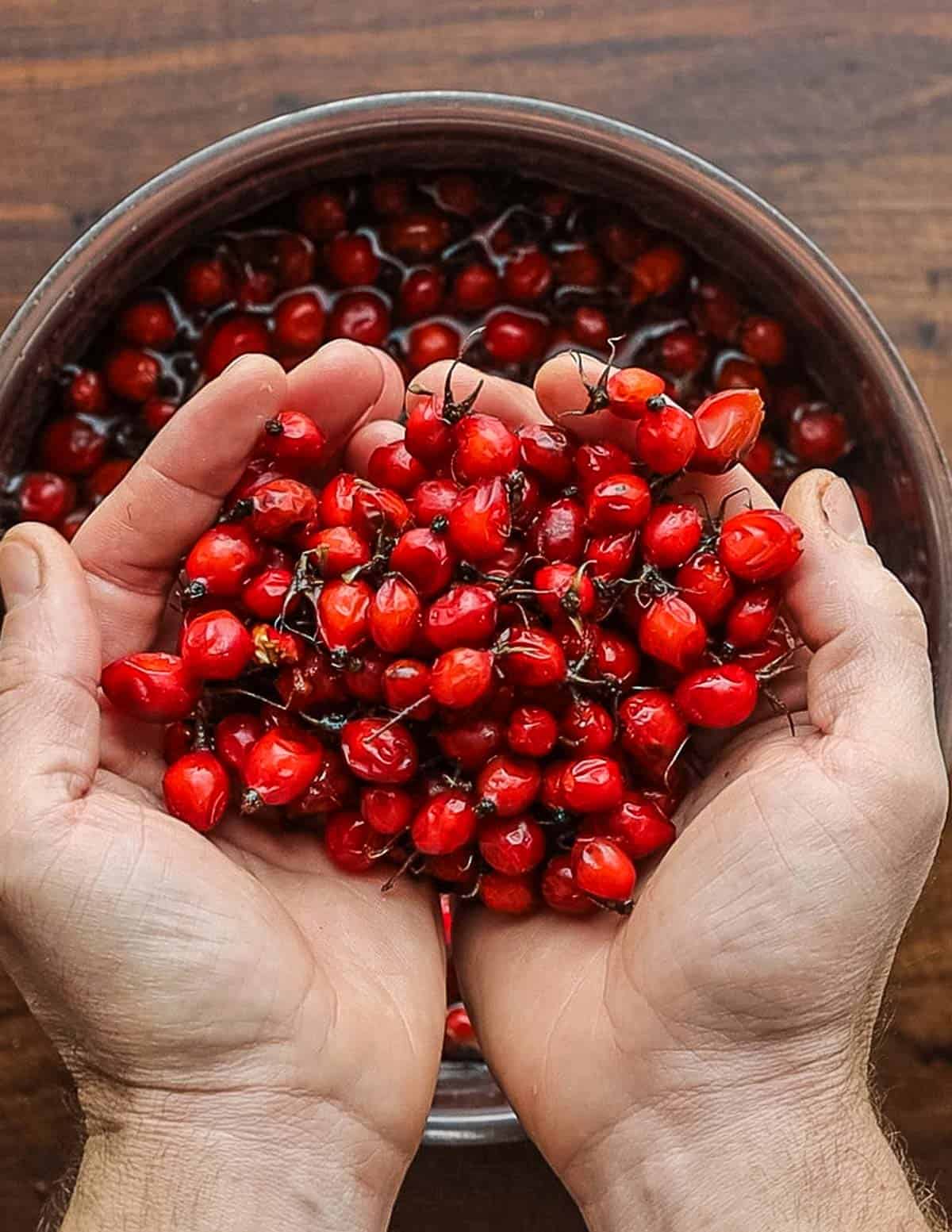
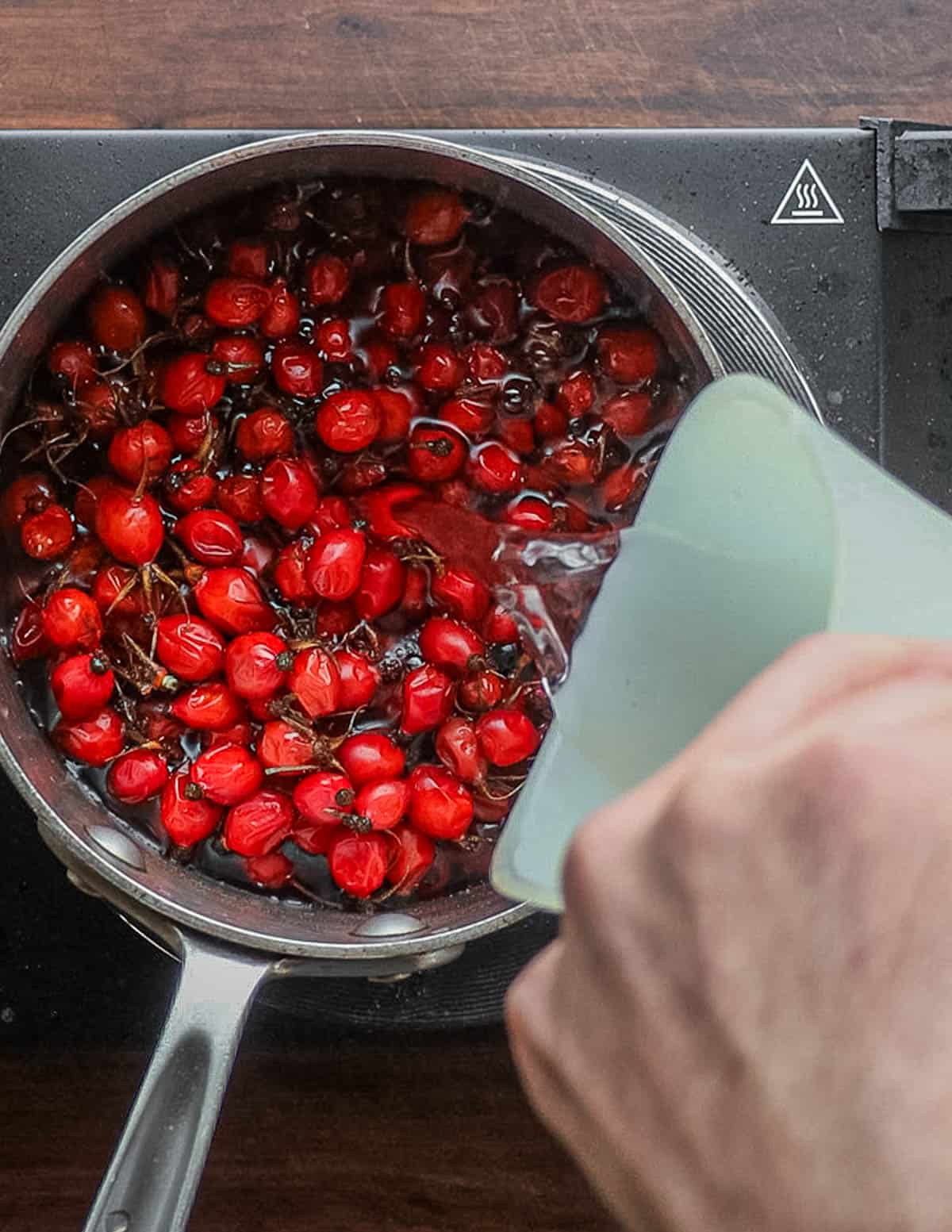
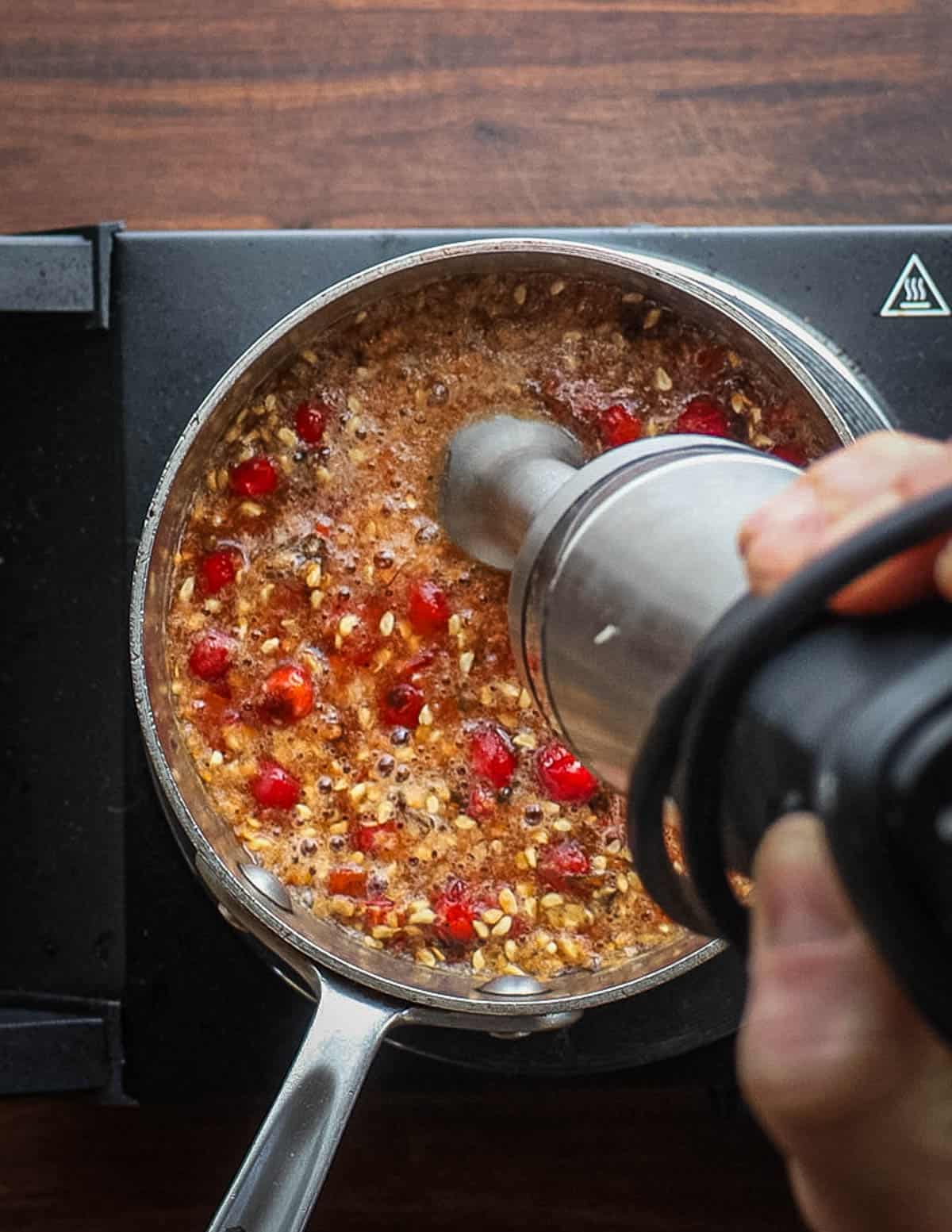
Cook the hips and water to make a strong infusion, then strain the liquid through cheesecloth as if you were making jelly.
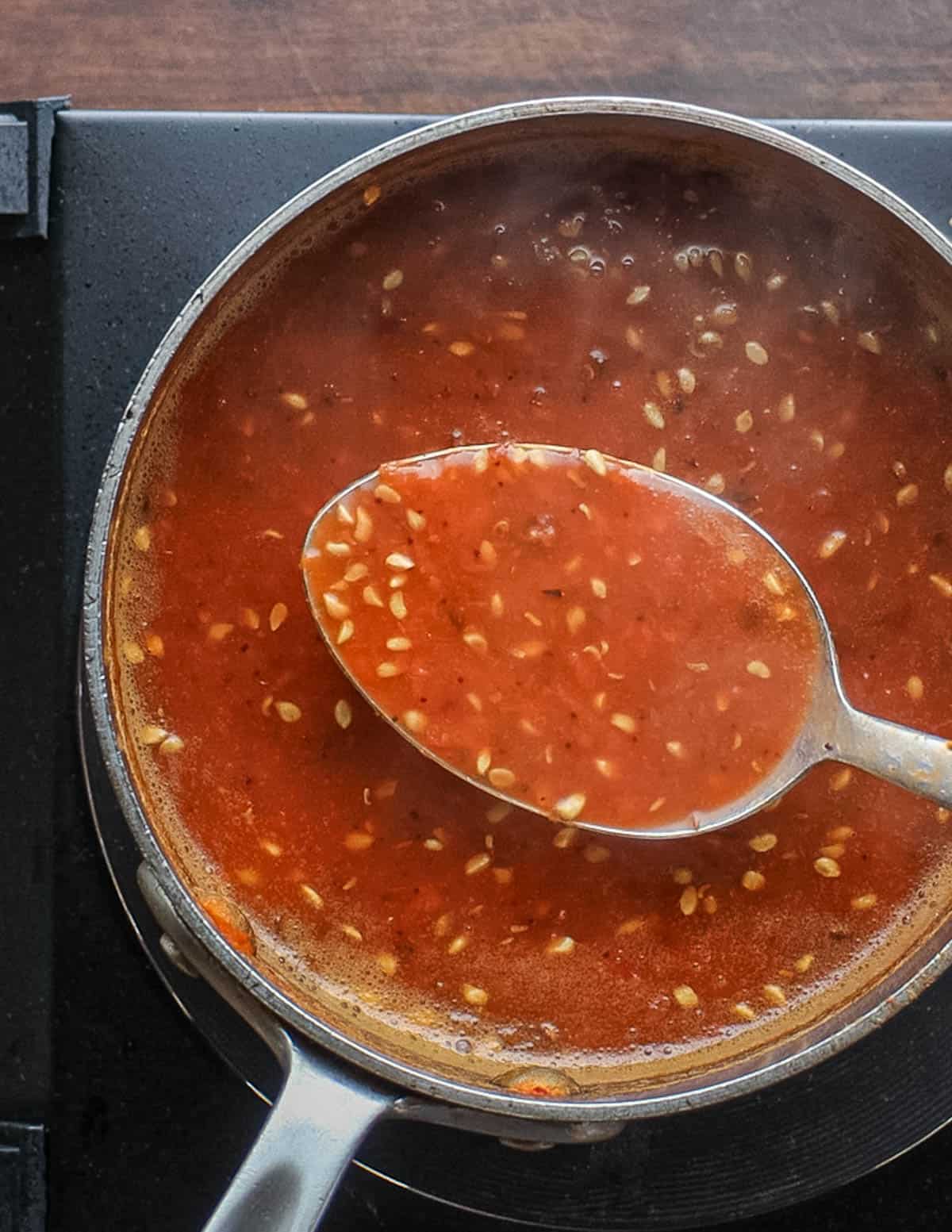
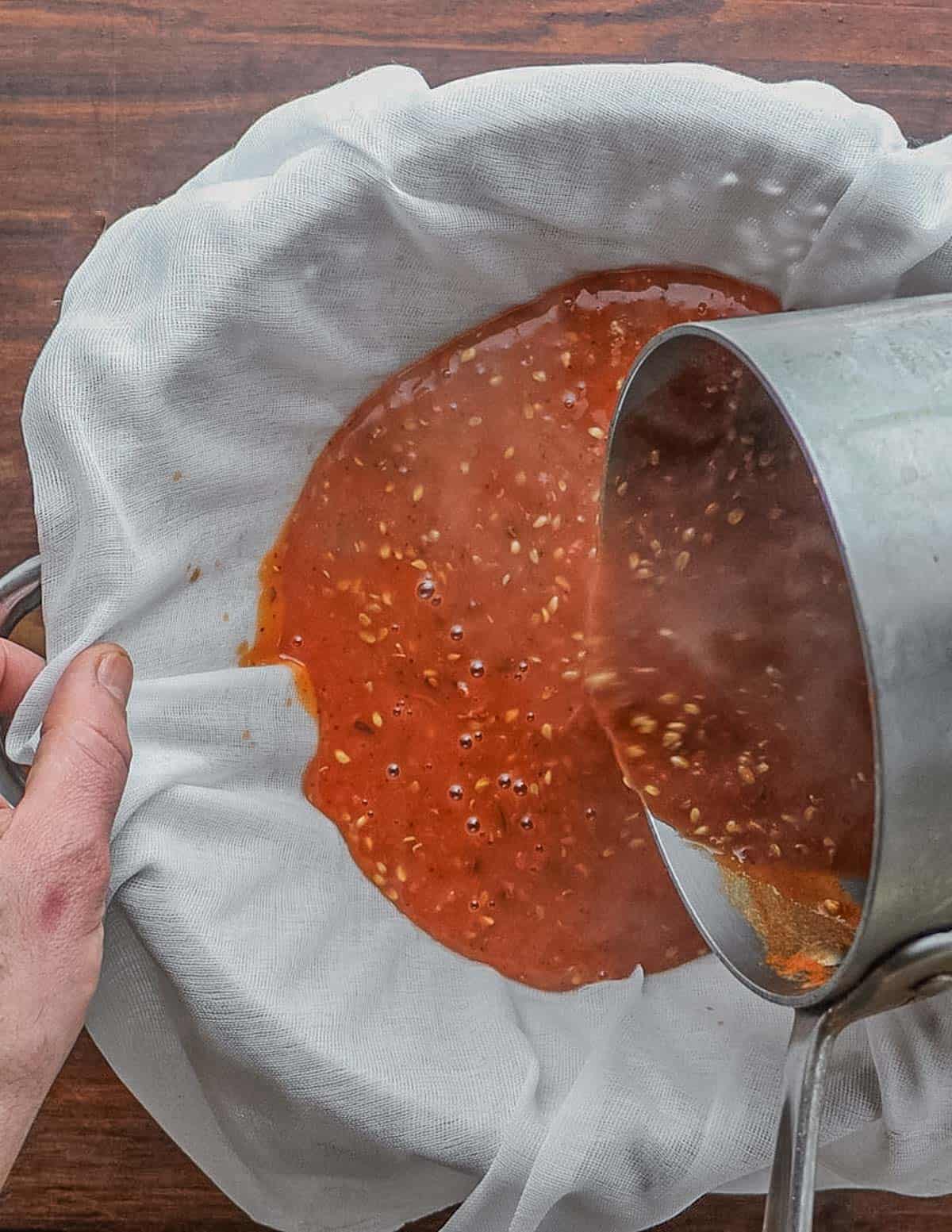
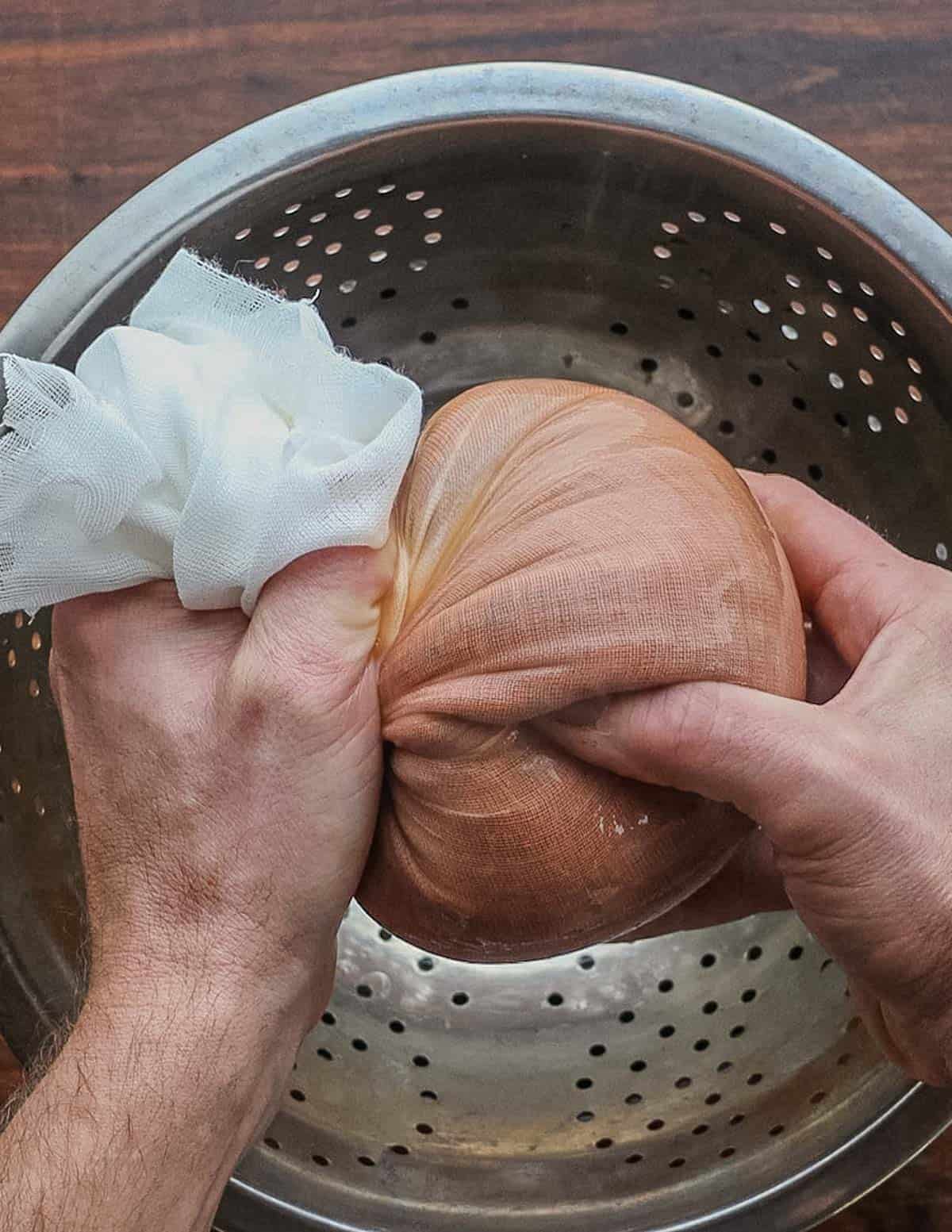
Take the finished rose hip juice, mix it with honey and simmer until the mixture is reduced by ⅓, or until 3 cups remain.
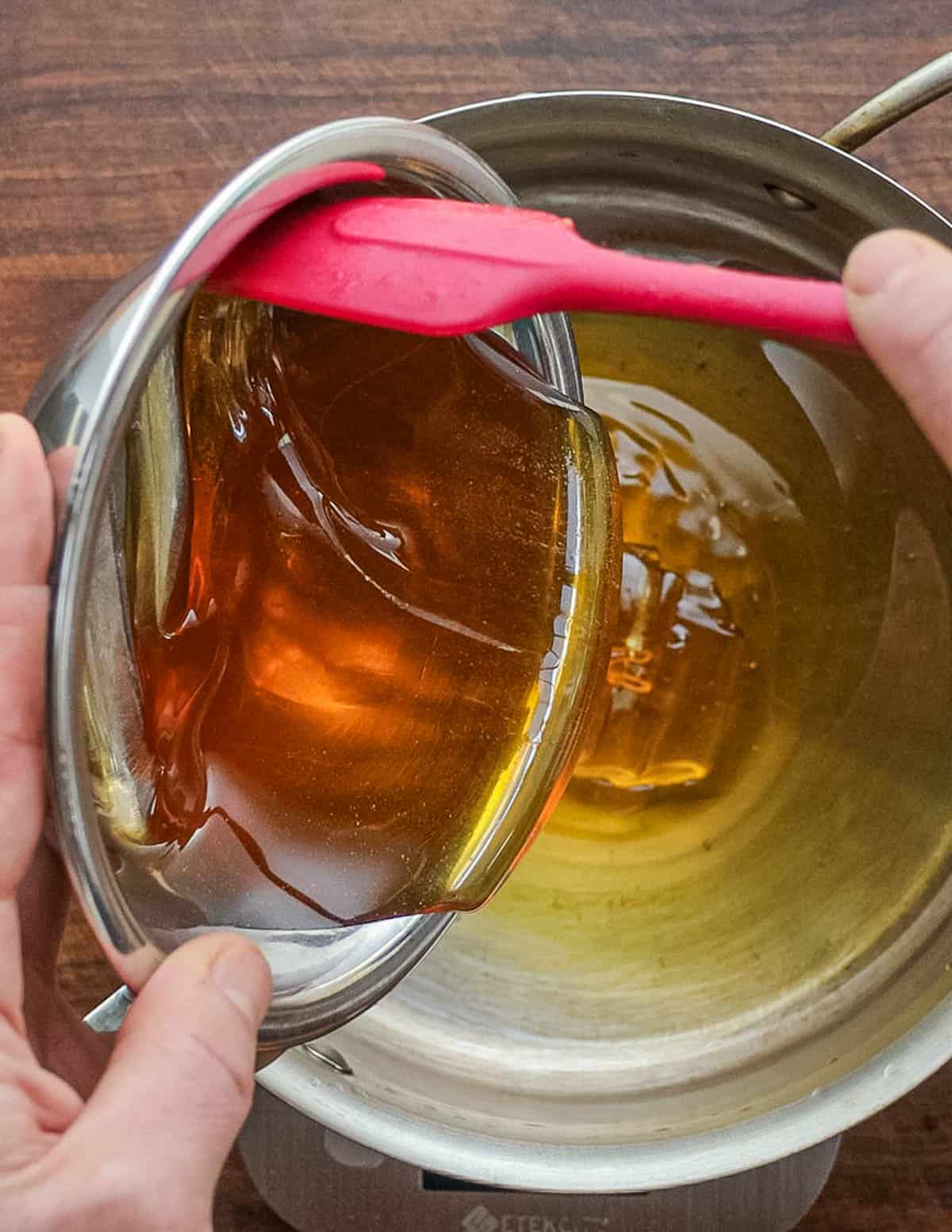

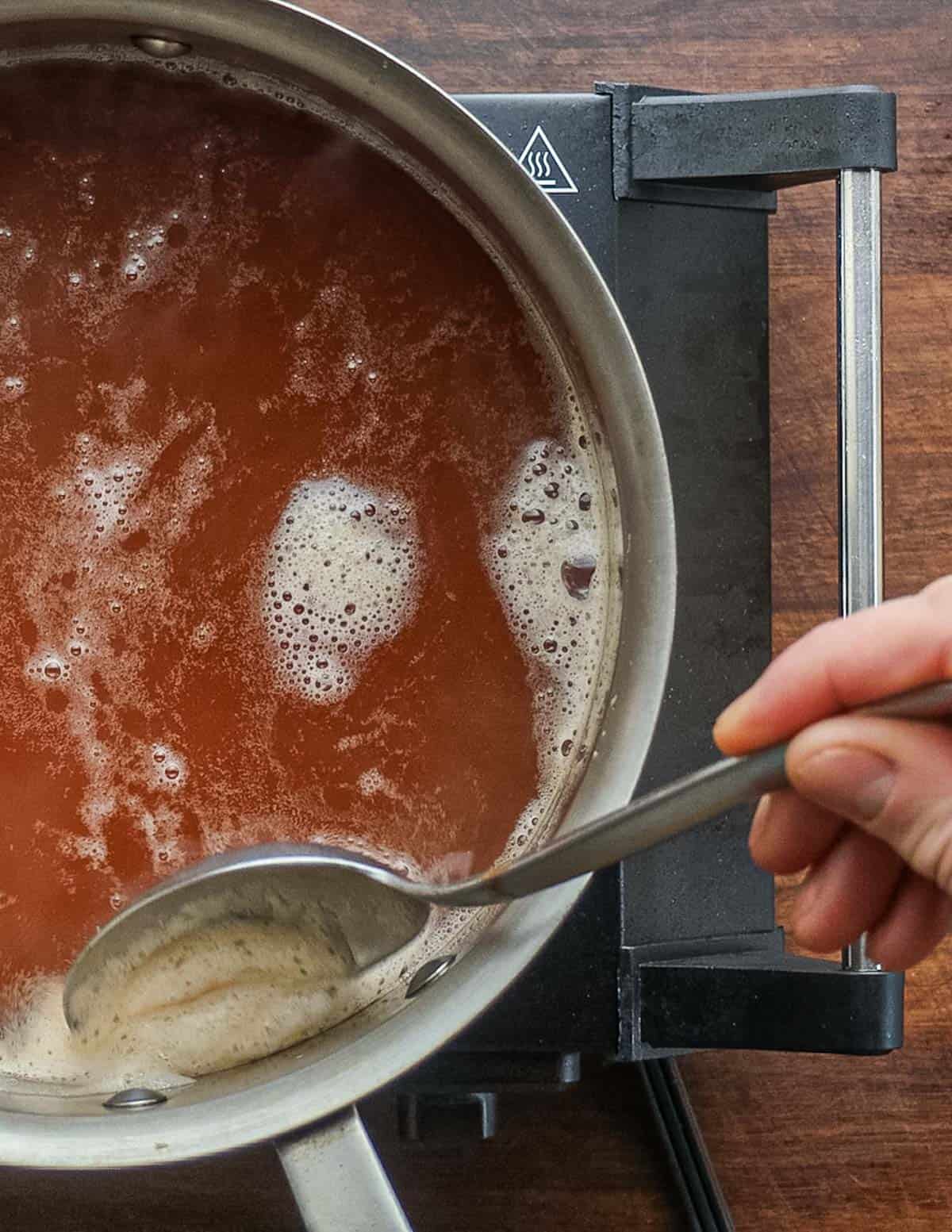
The finished syrup can be canned and processed in a water bath, or will last for many months in the refrigerator.
How to Use Rosehip Syrup
You can use the syrup as an all-purpose sweetener, but I mostly use it in drinks. It can also be nice drizzled over ice cream or used as a glaze for meat, especially with dash of chili flakes or hot sauce. Here's a few ways I use it:
- Poured over ice cream.
- Add to tea.
- Use as a glaze for pork or poultry.
- Adding to drinks, especially hot toddy's.


More Winter Foraging
Homemade Honey and Wild Rosehip Syrup
Equipment
- 1 3 quart sauce pot
- 1 hand blender or food processor
- 1 Cheesecloth
- 1 Strainer
Ingredients
- 1 lb rosehips any kind
- 2 lb mild wildflower honey or raw honey 2 ¾ cups
- 3 cups water
- ½ cup apple cider vinegar or homemade vinegar
- 2 slices of fresh ginger
- 2 teaspoons lemon juice
Instructions
- Wash and clean the rosehips. There’s no need to remove the calyx or deseed them. If you’re hips are larger than a dime, cut them in half.
- Put the rosehips in a pot and add the water and vinegar. Bring the mixture to a boil, then carefully puree the rosehips using a handblender, pulsing until they’re all broken up and the mixture is smooth-ish.
- You can also buzz the hips in a food processor.
- Add the ginger if using. Simmer for another 5 minutes. Turn the heat off and set the rosehip tea aside to infuse for 15 minutes.
- Strain the rosehip liquid through a double thickness of damp cheesecloth in a colander. When it’s cool enough to handle, squeeze the juice carefully from the cheesecloth to make sure you get it all.
- Remove the rosehip liquid and combine in a saucepot with the honey. Bring the mixture to a rolling boil for 10 minutes, skimming impurities that rise to the surface if you can.
- Reduce the syrup until you have exactly 3 cups~15 minutes. To check how much liquid you have, I like to keep a small bowl and a scale nearby.
- When you have three cups, add the lemon juice, pour the boiling syrup into sterilized 8 oz mason jars leaving a ½ inch headspace. Screw on the lids and process for 10 minutes in a water bath canner.
- Remove the jars and allow to cool, then label and store in a pantry.
- The syrup can also be frozen, or it will keep in the fridge for 12 months.
Video
Notes
Nutrition
FAQ
The syrup has a mild flavor with subtle taste of apples and honey, since roses and apples are related.
No. Rosehips don't have a smell you'll notice.
Yes, heat and drying doesn't affect vitamin C content. Start with 4 oz of dried rosehips and the same liquid called for in the recipe.

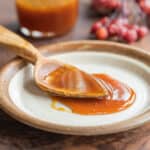
Jacque
I’ve been looking at rosehip syrup recipes and yours is explained very well. I am wondering about the purpose of adding apple cider vinegar? Thank you.
Alan Bergo
Hello. In many of the fruit preserves on this site I often use small amounts of vinegar. With some fruits it’s a way to layer flavors as I may use a vinegar made from the fruit in question. The most important thing for me is that vinegar improves the shelf life, but also adds a just a touch of tartness that helps things not become too sweet. It’s a little trick I learned from many years of working with professional pastry chefs and making preserves from lots of different types of fruit.
VELMA STERENBERG
Hello Alan
Thank you for posting an excellent recipe, with many uses. I have a question about the seeds enclosed in the hips as my web search came up with no info. In the past, when processing to make rose hip jelly, I have always removed the seeds first. And yes it is a laborious task! I noticed that you boiled the hips without removing the seeds, extracting the tea by pressing the mass through cheesecloth. Would you know anything about health benefits of the seeds themselves? Thank you.
Alan Bergo
Hey Velma. As I'm not a health professional I really try to stay in my lane here, sorry I don't know anything about the seeds except that they're unpleasant to eat.
N. MacGregor
I have harvested and made Rose Hip Syrup for many years based on an old family recipe which is a bit different than yours and used a lot of sugar.
Not sure if there are any rose hips left this season (due to the fact I have to compete with the birds when harvesting rose hips - it seems they also love them) but if I can find enough hips I will trying out your recipe.
BTW - I have never heard anything negative about using rose hips as a food source. In fact its always been considered to be a "healthy" food.
Love receiving and reading your post and your book is on my Christmas Wish List.
All the best from Northern Ontario Canada
Alan Bergo
Thanks N.
Gerry R.
I ran out to my yard to get the last of the hips and make this. It tastes like apple to me added to tea, so good!
Valerie
Great ideas! Thank you so much for the inspiration. I've never gathered the little, wild ones just because I wasn't quite sure how to process them and deal with all the hairs. I can't wait to try this process out.
Alan Bergo
Thanks Valerie.
Gene
I’ve decided the risks outweigh the benefits of rose hips and no longer harvest them. https://www.webmd.com/vitamins-and-supplements/rosehip-uses-and-risks
Alan Bergo
I think it's worth mentioning that WebMD is a for-profit Western Medicine website, and their funding comes from 3rd party advertisers, big drug company sponsors, etc. Trusting all of their information at face value is like taking advice from a doctor that gets money from pharmaceutical companies. It should be balanced with other information, IMO.
Amy
Absolutely. Some shill for Big Pharma probably got on here and made that comment. They don’t want people using free medicine that offers benefits without the nasty side effects. They want people dependent on pharmaceutical drugs instead that address only symptoms without making people more resilient by building up immunity and are just making the population sicker and sicker.
Lissa Streeter
There is some science to what Alan proposes Gene : https://www.ncbi.nlm.nih.gov/pmc/articles/PMC5629151/#:~:text=Rosehip%20tea%20a%20good%20source,2008).
I think you will find WebMD will say almost anything has "side effects"..
I find rosehips take quite a bit of work. I do take the barbed seeds out myself. So it is indeed a bit fiddly. But the result when I use just a few as an ingredient in an herbal tea with sour cherries and a little bit of dried apple is just wonderful. Didn't know apples and roses were related ! Thank you Alan !
Alan Bergo
Hey thanks Lissa.